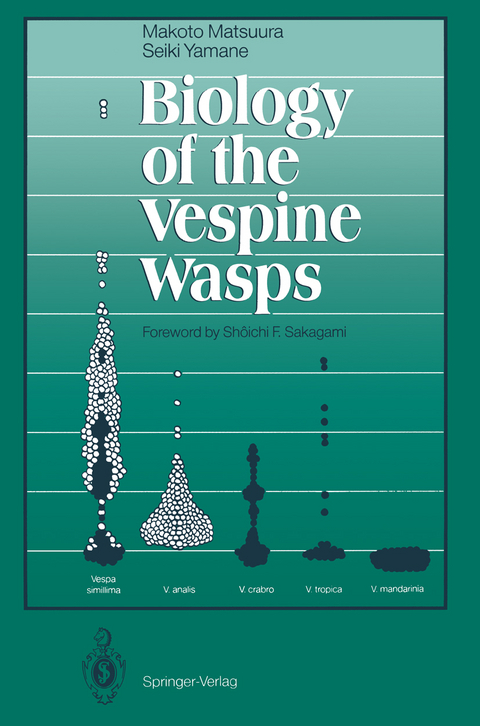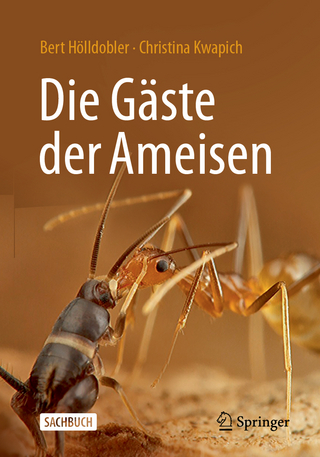
Biology of the Vespine Wasps
Springer Berlin (Verlag)
978-3-642-75232-2 (ISBN)
1. The Vespinae in Insect Sociology.- 1 Historical Review.- 2 The Vespine Wasps as Social Insects.- 2. Life Cycle.- 1 Features of the Life Cycle.- 2 Behavior of Queens Before Nest Foundation.- 3 Nesting Periods.- 4 Hibernating Habits.- 3. Nesting Habits.- 1 Nesting Materials.- 2 Nest Sites.- 3 Colony Foundation.- 4 Architecture and Function of Embryo Nests.- 5 Development and Structure of Nest.- 6 Nest Relocation.- 7 Repair.- 4. Social Structure and Behavior.- 1 Division of Labor Between Queen and Workers.- 2 Relation Between Labor and Age in Worker.- 3 Oviposition by Workers.- 4 Behavior of Larvae.- 5 Trophallaxis Between Larvae and Adults.- 6 Daily Activity of Workers.- 5. Foraging Behavior.- 1 Food Sources and Feeding Habits.- 2 Dependence of Vespa tropica on Polistine Wasps.- 3 Group Predation by Vespa mandarinia.- 4 Foraging Distance.- 5 Intra- and Interspecific Relationships at Tree Sap Apertures.- 6. Population Dynamics.- 1 Survivorship Curves of Workers.- 2 Seasonal Changes in Population Structure.- 3 Production of Reproductives.- 4 Sympatry and Mechanism of Coexistence in Five Vespa Species.- 5 Survivorship of Colonies and Factors Influencing Mortality.- 6 Annual Fluctuations in Number of Colonies.- 7. Life of Wasps in the Tropics.- 1 Life Cycle Characteristics.- 2 Ecological Characteristics of Nocturnal Wasps Provespa.- 8. Social Parasitism.- 1 Vespine Social Parasites.- 2 Social Parasitism as an Adaptive Strategy.- 9. Natural Enemies.- 1 Main Natural Enemies.- 2 Effect of Stylopization by Xenos spp.- 10. Phylogeny and Classification.- 1 Characters Used.- 2 Phylogenetic Position of the Vespinae.- 3 Phylogeny of the Vespinae.- 4 List of the World's Vespinae.- 11. Distribution and Phylogeny.- 1 Distribution Pattern.- 2 Similarity of Fauna in Eurasia and NorthAmerica.- 12. The Vespines and Man.- 1 Vespine Wasps as Nuisance Pests.- 2 The Wasp as Enemy of the Honeybee.- 3 The Wasp as Fruit Pest.- 4 The Wasp as Beneficial Insect.- 5 Control.- 13. The Japanese Species.- 1 Identification.- 2 The Japanese Vespinae.- 3 Distribution in Japan.- References.- Author Index.- Taxonomic Index.
| Erscheint lt. Verlag | 13.12.2011 |
|---|---|
| Vorwort | Shoichi F. Sakagami |
| Zusatzinfo | XIX, 323 p. |
| Verlagsort | Berlin |
| Sprache | englisch |
| Maße | 155 x 235 mm |
| Gewicht | 521 g |
| Themenwelt | Naturwissenschaften ► Biologie ► Humanbiologie |
| Naturwissenschaften ► Biologie ► Zellbiologie | |
| Naturwissenschaften ► Biologie ► Zoologie | |
| Schlagworte | Hornissen • Schwarmverhalten • Wespen |
| ISBN-10 | 3-642-75232-2 / 3642752322 |
| ISBN-13 | 978-3-642-75232-2 / 9783642752322 |
| Zustand | Neuware |
| Haben Sie eine Frage zum Produkt? |
aus dem Bereich


